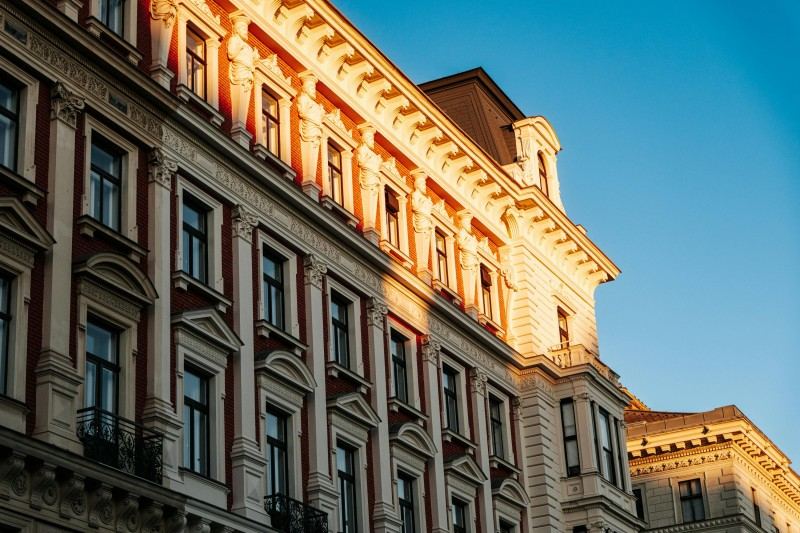Passive Radiative Cooling Technology and Exploring the potential of Passive Radiative Cooling Technology in sustainable architecture: How can it revolutionize energy efficiency in buildings? Actually, let’s think about it for a second. Passive Radiative Cooling Technology, or let's just call it PRCT for short, is gaining a lot of traction these days. Everyone wants to know how we can combat urban heat while saving energy at the same time. With rising temperatures and energy costs, it’s essential to find solutions that not only help cool our buildings but also reduce our carbon footprint. PRCT does exactly that!

Now, PRCT works by reflecting sunlight and radiating heat away from surfaces, which can lead to significant energy savings. It’s like wearing white in summer to stay cool! So, let’s dive into five ways this innovative technology can save energy.
Reducing Air Conditioning Costs
Emmm, one of the most immediate benefits of PRCT is the reduction in air conditioning costs. By keeping buildings cooler naturally, the reliance on air conditioning systems decreases. This translates to lower electricity bills. According to studies, buildings equipped with PRCT can see a reduction in cooling costs by up to 30%. What do you think?
| Benefit | Savings (%) |
|---|
| Air Conditioning Cost Reduction | Up to 30% |
Enhancing Building Durability
To be honest, buildings that overheat can suffer from structural damage over time. Using PRCT helps maintain optimal temperatures, which can extend the lifespan of building materials. Imagine your house as a fine wine; you want it to age well! This durability translates into less frequent repairs and replacements.
Supporting Sustainable Development Goals
As far as I know, many companies are looking to align with sustainable development goals. PRCT contributes to this by reducing energy consumption and greenhouse gas emissions. It’s a win-win situation for businesses looking to improve their environmental impact!
Versatile Application Across Industries
Let’s think about a question first: where can we use PRCT? The answer is everywhere! From residential buildings to industrial facilities, the applications are vast. Industries such as construction, logistics, and even renewable energy can benefit from these solutions.
Innovative Technologies Like i2Cool
Now, here’s where it gets really exciting! i2Cool Technology is an energy-saving new materials company that focuses on PRCT. Founded by brilliant minds from the Energy and Environment School of City University of Hong Kong, they’ve transformed top-notch scientific research into commercial applications. Their products include coatings and films that achieve high-efficiency solar light reflection and mid-infrared radiation. It’s like having a personal cooling system without the electricity bill! With temperature reduction effects of up to 42°C, it’s clear why i2Cool is making waves in the industry.
| Company | Core Products | Temperature Reduction Effect (°C) |
|---|
| i2Cool Technology | Coatings, Films | Up to 42 |
In conclusion, passive radiative cooling technology is not just a trend; it's a necessity in today's world. As we look ahead, embracing technologies like i2Cool can help us build a sustainable future while saving energy. So, what would you choose? Let's keep the conversation going!
2. Passive Radiative Cooling Technology and Sustainable Building Materials
In recent years, the construction industry has been undergoing significant changes. One of the most promising innovations is Passive Radiative Cooling Technology. This technology uses natural processes to cool buildings without relying on conventional air conditioning systems. The idea is simple yet effective. During the day, buildings absorb heat from the sun, making them hot. However, at night, they can release this heat back into the atmosphere. By using materials that enhance this heat release, we can keep buildings cooler during the day. This is especially important in urban areas where heat can build up significantly.
The views of industry professionals on this technology are largely positive. Many architects and builders see it as a game-changer for sustainable design practices. They believe that by integrating Passive Radiative Cooling Technology into their projects, they can improve energy efficiency significantly. For instance, a building designed with this technology can reduce its reliance on energy-consuming cooling systems. This not only saves money but also reduces carbon emissions, making it a win-win situation for everyone involved.
Moreover, using sustainable building materials alongside this technology enhances its effectiveness. For example, reflective materials can be used on rooftops to bounce sunlight away, further reducing heat absorption. This combination of innovation creates a more comfortable living environment while promoting sustainability. As more professionals embrace this technology, we may see a shift in how buildings are designed and constructed, leading to greener cities.
3. Innovations in Passive Radiative Cooling and Climate Adaptation
The relationship between Passive Cooling, sustainable architecture, and energy efficiency cannot be overstated. As climate change continues to impact our weather patterns, adapting our buildings becomes crucial. Innovations in Passive Radiative Cooling Technology offer solutions that align with these needs. For instance, consider a community in a hot climate that traditionally relies on heavy air conditioning. With the introduction of Passive Radiative Cooling Technology, these buildings could maintain comfortable temperatures naturally.
Take the case of a recent project in a desert region. By utilizing Passive Radiative Cooling Technology, the designers created homes that stay cool during scorching days while remaining warm at night. This was accomplished through careful selection of building materials and strategic architectural designs. The community reported significant energy savings and improved quality of life.
As we look to the future, the integration of green building materials with Passive Radiative Cooling Technology will play a crucial role in climate adaptation strategies. These innovations not only provide immediate benefits in terms of comfort and efficiency but also contribute to long-term sustainability goals. The more we focus on these solutions, the better equipped we will be to face the challenges posed by climate change.
Editor of this article: Xiao Yuan, created through Jiasou TideFlow AI SEO
